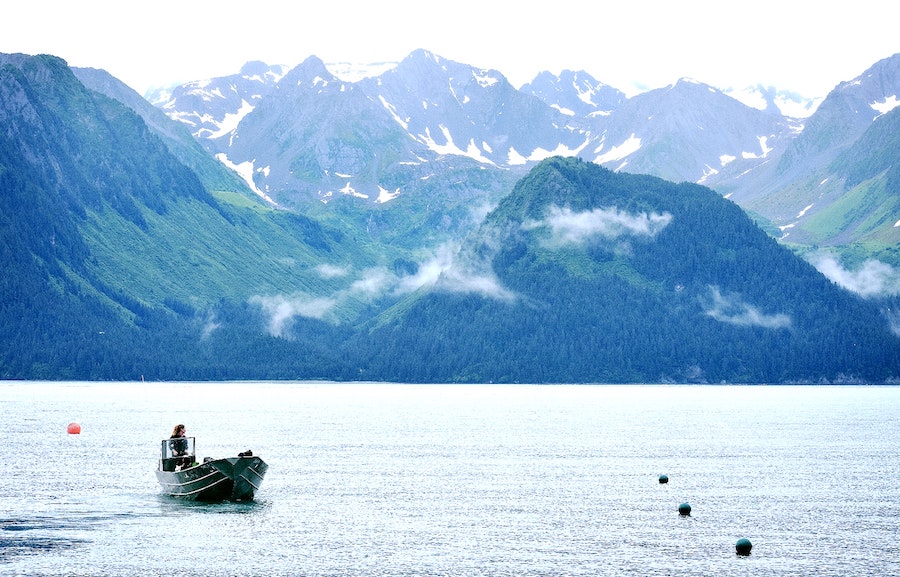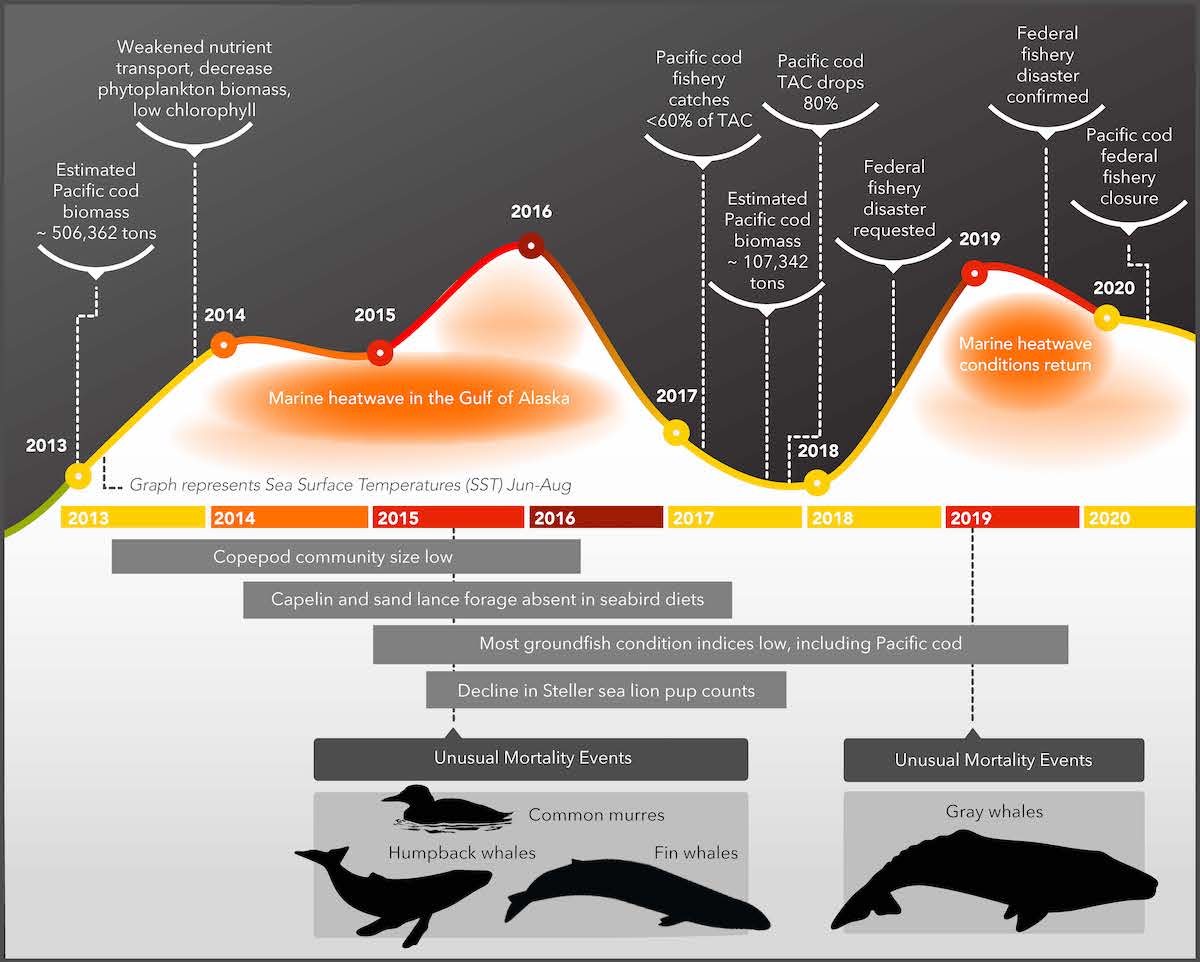The Heat is On: Climate-Readiness in Fisheries
How can we prepare fisheries for climate change?

Atxidax is the Aleut word for Pacific cod, and it translates to “the fish that stops.” Alaska Native people have stewarded and harvested Pacific cod in Alaskan waters for over 4500 years, and Pacific cod continues to be a key cultural and food security resource today. Pacific cod also support economically important fisheries in the Gulf of Alaska, where the commercial Pacific cod fishery is valued at over $103 million and accounts for roughly one third of the groundfish harvest value in the region.
Climate change and an associated marine heatwave in the Gulf of Alaska (“the blob”) brought this productive fishery system crashing down around fishermen and communities in recent years. From 2014 to 2016, the northeast Pacific experienced the greatest marine heatwave recorded since 1880. The ecosystem was stressed, and Pacific cod’s response to the severe heat was rapid and extreme. From 2015 to 2017, Pacific cod abundance declined by over 70%. In 2019, officials declared an emergency disaster and in 2020, closed the directed federal fishery for Gulf of Alaska Pacific cod.
Gulf of Alaska communities were left reeling to find alternate sources of income to sustain their livelihoods.
One Gulf of Alaska cod fishermen noted:
“[This marine heatwave event] felt different than the standard boom/bust cycle that Pacific cod go through. It felt different in that it was more extreme, going from a high high to a very low low. [We] could not catch enough cod to pay for fuel.”
“Management felt one step behind. Not enough quota when needed and then a bit slow to slow down the fishery.”

The story of Pacific cod in the Gulf of Alaska is part of a much larger story about the need to prepare fisheries—and adapt our management system—for climate change. It also highlights that there is not time to wait when it comes to making our fisheries ready for climate change. The impacts of climate change are happening real-time.
The good news is that we have a lot of information we can use to take action now. NOAA Fisheries, the federal agency tasked with being the steward of our nation’s fishery resources, and some of the eight regional councils that manage fisheries have acknowledged the need to make changes to management to deal with climate change.
But what does taking action actually look like?
Making fisheries climate-ready won’t involve a single silver bullet solution. Right now, managers need to do more to bring climate information to the table and, most importantly, they need to use it to change how they manage. They can also work to put more proactive measures in place that allow them to respond effectively to events like marine heatwaves. And when things are less certain or signs point to trouble ahead, managers need to act with precaution.

At the same time, we should continue to improve our understanding of the impacts of climate change on fish and the ecosystem by doing more research, expanding surveys, including Traditional Knowledge and improving the methods and tools. It’s a sign of the challenges ahead that a fishery as data-rich as Gulf of Alaska Pacific cod is struggling to navigate the new waters after the marine heatwave event.
Our marine ecosystem and fisheries are at a crossroads. For fisheries to survive the challenges of climate change, we need more research to understand how they will respond to changing ocean conditions. Then we need to implement robust, adaptive policies that tackle these problems head-on. Although some regional management councils are making progress on climate-ready fisheries policies, the example of Pacific cod highlights the need for national attention to this pressing issue.